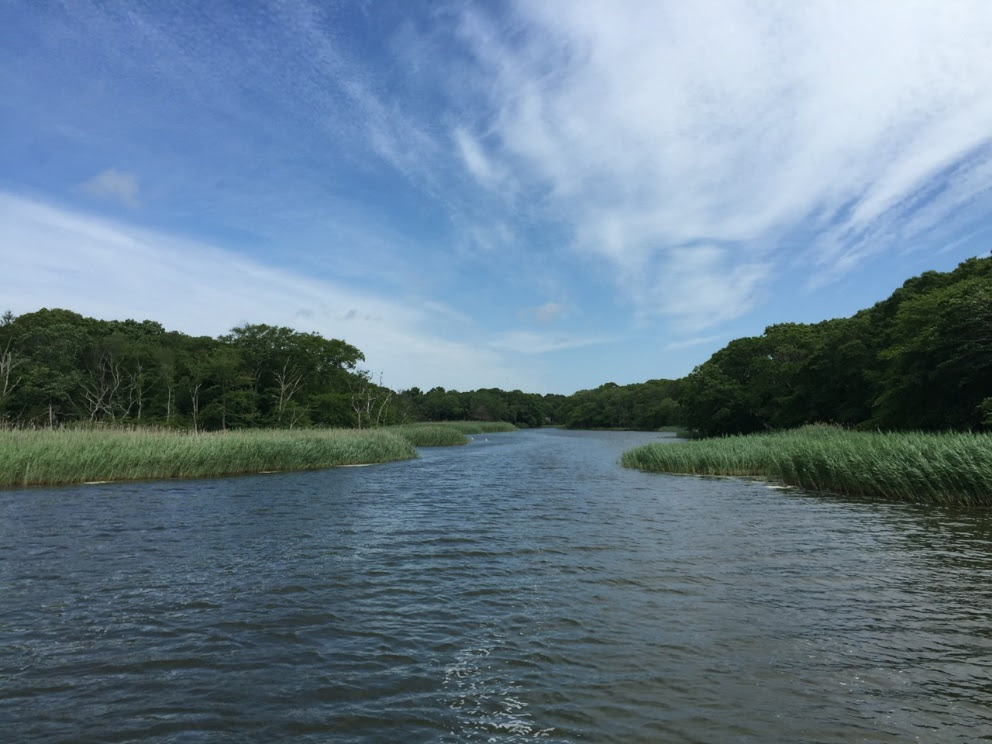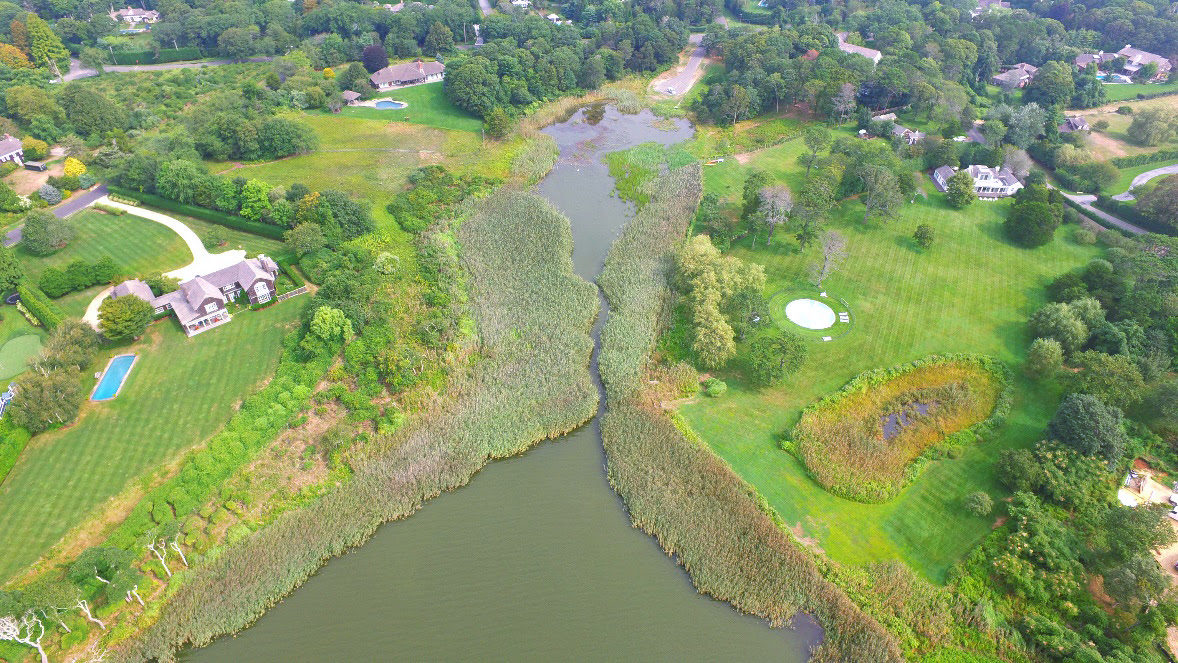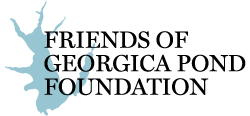Phragmites is well known to most people who live near Georgica Pond or other local water bodies such as Hook Pond, Accabonac Harbor, Northwest Creek and others. In fact, it is impossible to find a brackish or estuarine water body on the East End that does not have Phragmites. Some people like Phragmites and some people don’t. Reasons for liking it include the privacy it can create and the nutrients it absorbs from upland runoff. Reasons for not liking it include its invasive dominance of all else. To better understand Phragmites at Georgica Pond, FOGP recently commissioned a study by Phragmites expert, Ray Hinkle, the Principal Ecologist and Co-Leader of Ecosystem Restoration at AECOM, one of the world’s largest environmental engineering consulting firms.

The Hinkle report concludes:
- more than 60% of the total pond shoreline is invaded by Phragmites, covering approximately 29 acres.
- Without active management, Phragmites could increase from 10% of the total pond area to 30% in the next 25 years.
- All six of the pond’s creeks and coves could be cut off from tidal flow.
Although there is a native variety, Phragmites is considered to be an introduced species which has aggressively spread in North America. To be sure we were dealing with the introduced variety, ten samples were sent to the Molecular Ecology Laboratory of Utah State University for DNA analysis. All samples were confirmed as the “haplotype M, a non-native haplotype of European origin commonly found in North America as an invasive species”.

Phragmites is known to sequester nutrients including nitrogen, heavy metals and carbon and it rapidly builds and stabilizes soil in some settings. But it also dominates sites, reducing biodiversity and outcompeting native species. Our goal at Georgica Pond is to restore native brackish marsh where Phragmites has taken over. By replacing the Phragmites with native species, the buffering capacity of marshland can be maintained, with the added value of improved habitat and biodiversity.
Working with the East Hampton Town Trustees and the Village of East Hampton, FOGP has helped secure a New York State Department of Environmental Conservation (NYSDEC) permit to do a limited excavation of Phragmites at the upper end of Georgica Cove. Phragmites growth had become so dense there that the upper part of Georgica Cove had been cut off from the rest of the Cove. Several years of cutting has reduced the stand, but the root mass is still present and quickly re-grows. Pre-excavation sampling has already started, and excavation is expected to start this fall.

In addition, many private landowners have permits to cut Phragmites annually. Permits from both the NYSDEC, either the Town of East Hampton or the Village of East Hampton and the East Hampton Town Trustees are required. Managing Phragmites is not easy and takes multiple cuts annually, over successive years. Some homeowners have also received permits to excavate Phragmites root masses which is more instantly effective, but very costly.
Friends of Georgica Pond Foundation is working with the Town Trustees and other interested pond constituents to create a pond-wide Phragmites approach as part of an overall management plan for the pond. The goal aims to have Phragmites management become a more efficient and streamlined process that improves the marsh and develops healthy, diverse buffer zones around the pond.
